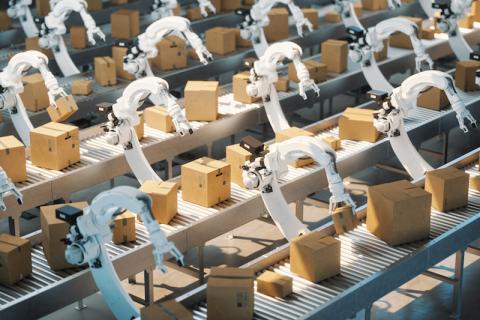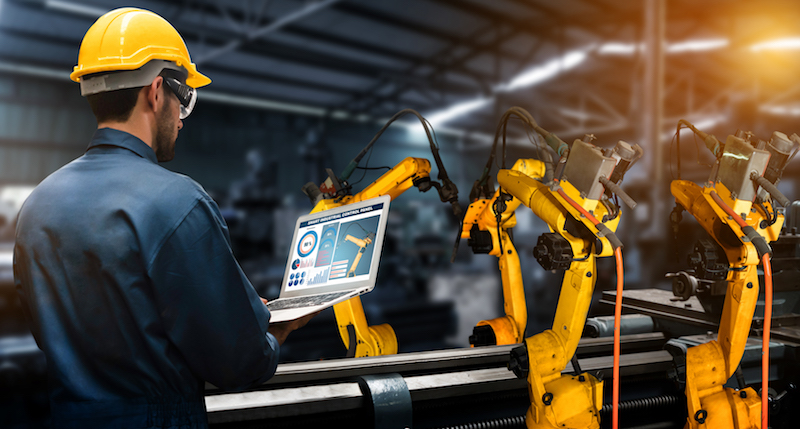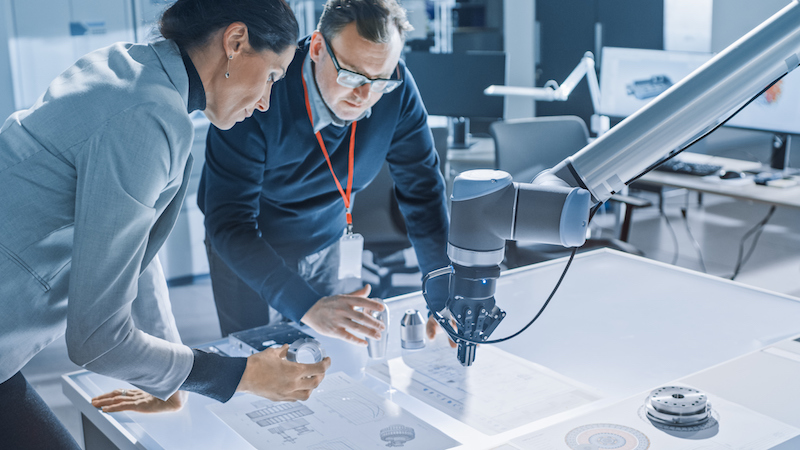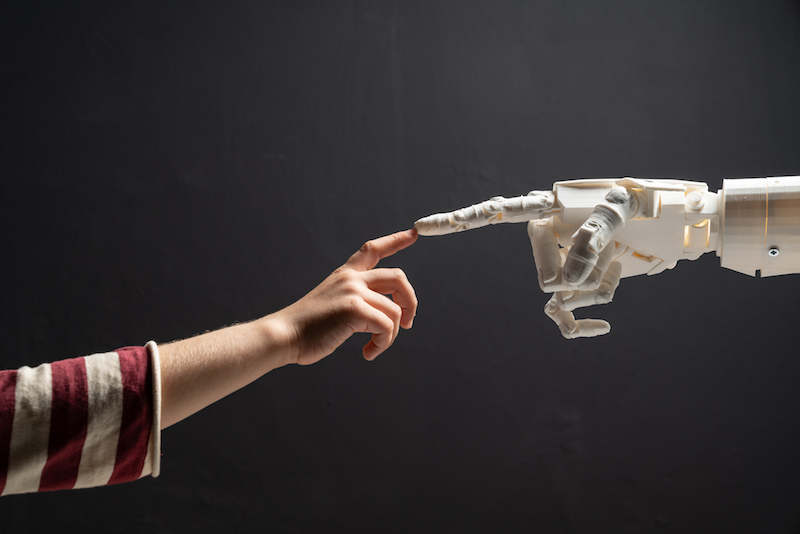Online Technical Training Blog

Cobots Are At The Forefront of Manufacturing
Imagine working on a job that poses a serious risk to your health and safety—perhaps carrying close to 10 pounds of weight 350 times a day. Or imagine having to repeat the same mundane task over and over again when you could be doing something more interactive. This is why cobots, or “collaborative robots,” are leading the charge in manufacturing and taking over repetitive, even risky, tasks.
The rise of cobots in manufacturing is positive for workers and enterprises because they mean increased safety and efficiency. In this article, we’ll discuss what exactly cobots are, how they’re changing manufacturing, and what the future looks like.

What Are Cobots?
Cobots are collaborative robots capable of working alongside humans. They can help humans collaborate faster and more efficiently in a more safe environment. Unlike other robots operating in 4-Ds type environments that need separation from humans to operate safely, cobots are meant to operate in conjunction with, and in close proximity, to humans.
The first examples of cobots emerged in the mid-1990s from university research projects and the General Motors (GM) Robotics Center. Humans would provide the power to make the machines move while the cobots would provide the control and steering, placing objects with precision. The industry development of cobots is ongoing in several different areas, producing faster reaction times, more precise movement patterns, orientation capabilities, and capabilities in imitating humans. The advancements in cobot development mean that these tools will be implemented in almost all aspects of manufacturing at some point in the future.
Collaborative Robots in Manufacturing
Cobots can be deployed in almost any industry and sector to take on dull, dirty, and dangerous work, but manufacturing in particular is where they shine. They take on the actions and duties that could be dangerous to a human or just plain dull. As an example, in Cologne, Germany. Ford Fiestas are dipped in a special chemical bath to make them resistant to corrosion. Sometimes untreated sections are left behind, which can affect the quality of the product as it moves further down the line.
Cobots prevent this issue by “feeling” the car surface for untreated spots. Once spots are detected, they can sand them down and vacuum the dust left behind. The entire surface of a car can be sanded in under 35 seconds using a battery of cobots. Not only are they more efficient than humans, but the cobots protect human employees from the risk of skin contact with potentially hazardous chemicals.
However, it’s still considered a collaborative effort because employees must check the cobots’ work for inconsistencies before allowing primer and paint to be applied to the frame. As much as we can depend on cobots and other robots to help us produce higher quality work, humans are still needed to double check for errors.

Good News for All Industries
There might be some concerns that cobots will take over jobs, but this is not necessarily true. On the contrary, the growing demand for cobots is good news, especially in manufacturing. Manufacturing workers often face endless, repetitive tasks that are prime opportunities for cobots. The collaborative nature of cobots means that jobs are not usually lost, just made better.
Cobots can help ease the labour shortage that some industries are currently experiencing. Prior to the COVID-19 pandemic, the talent market was dwindling. It was estimated that about 2.4 million US manufacturing jobs would remain unfilled until 2028. But in a 2018 Deloitte article on the future of manufacturing, it states that “the Fourth Industrial Revolution is transforming the world of work through artificial intelligence, advanced robotics, automation, analytics, and the Internet of Things. Despite common fears, these technologies are likely to create more jobs than they replace—as illustrated by the tight labor conditions in the US and global manufacturing industry.”
Possible Challenges
Massive deployments of any new technology can be tricky, but when it comes to cobots, this is especially true. Industries need to develop use cases for cobots that prove their efficacy, and the design phase has historically been where all configuration and fine-tuning takes place. But the main challenge with cobots is that insufficient technology hinders this phase. Cobot technology includes hardware design, sensors and actuators, efficient information processing, video processing, planning and multiple fields from artificial intelligence landscapes, along with technologies that ensure safety, predictability and security.
Enterprises will need to develop use cases that benefit from human-robot collaboration, as this technology matures. Technology vendors will also need to ensure dependability of the systems, in terms of predictability, security and safety. They’ll also need to make sure they’re complying to set regulations and standards.

Cobots for the Future
The increased use of cobots in manufacturing means enhanced safety, reliability and more streamlined processes. While cobot manufacturers are competing to make cobots less expensive and more complex, they could possibly face challenges with deployment. However, cobots are the way of the future and their use will only increase.
Our Robotics Technician program introduces the concepts of industrial robots and explains how they are used in a plant or manufacturing system. If you’re interested in learning more, check out the program details or get in touch with an advisor.


